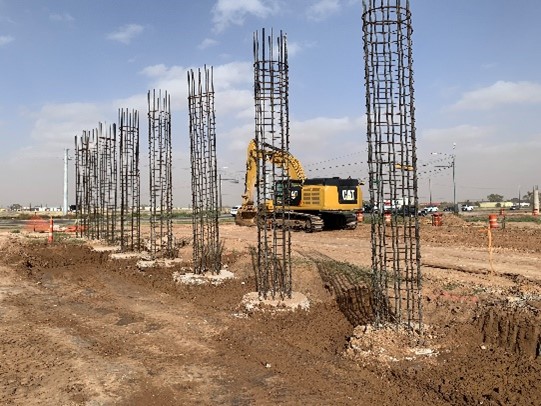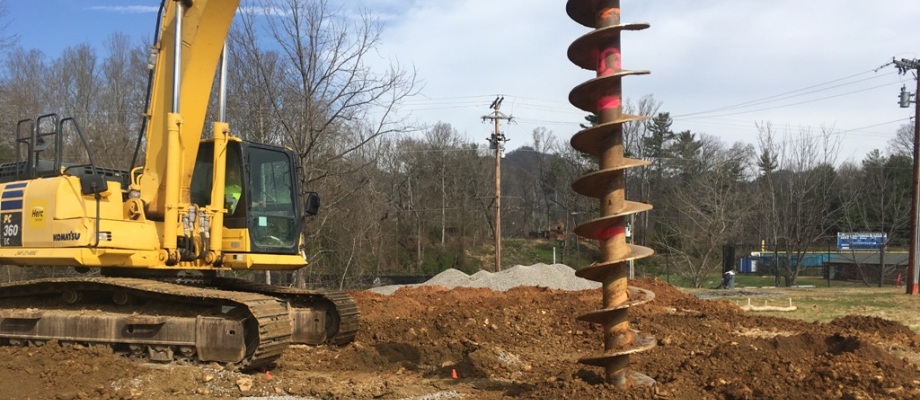The Effect of New Technologies on the Geotechnical Industry
The Effect of New Technologies on the Geotechnical Industry
Blog Article
Understanding the Comprehensive Role of Geotechnical Designers in Ground Examination and Dirt Evaluation for Building Projects
Geotechnical designers are essential to the success of building and construction jobs, providing necessary understandings through comprehensive ground examinations and dirt evaluation. Their know-how in assessing dirt actions and using innovative screening strategies educates critical decisions that promote architectural integrity and security.
Role of Geotechnical Engineers
The pivotal function of geotechnical designers in construction projects can not be overstated, as they provide crucial understandings right into soil behavior and website problems. These experts are entrusted with analyzing the suitability of the ground for various kinds of frameworks, guaranteeing safety and security and security throughout the building and construction procedure. Their competence includes a vast array of activities, including site characterization, soil tasting, and research laboratory screening, which are critical for figuring out the physical and mechanical residential or commercial properties of the soil.
Geotechnical designers use their findings to develop foundational layouts that suit load-bearing needs and mitigate dangers associated with soil slope, liquefaction, and settlement stability. They play an essential role in recognizing prospective hazards, such as groundwater fluctuations and contamination, which can dramatically influence project stability. They team up with architects, civil engineers, and professionals to guarantee that geotechnical factors to consider are integrated right into the total design and building stages.
Ground Investigation Methods
Ground examination strategies form the foundation of geotechnical engineering, allowing engineers to acquire a comprehensive understanding of subsurface conditions. These strategies are important for analyzing soil properties, determining groundwater degrees, and identifying potential geological dangers.
Typical techniques consist of borehole drilling, which enables for the removal of dirt examples at various midsts, providing important data for analysis. In addition, in situ testing strategies, such as Basic Infiltration Examinations (SPT) and Cone Penetration Tests (CPT), are employed to review soil strength and density straight in the ground.
Geophysical techniques additionally play a considerable duty in ground examinations. Methods such as seismic studies and electrical resistivity tomography assistance assess subsurface attributes without substantial excavation. geotech engineer. These non-invasive approaches are specifically helpful in delicate or big areas where disruption should be lessened
Furthermore, exploratory trenches can be excavated to visually examine dirt layers and identify any abnormalities. Each of these strategies contributes distinct understandings, allowing geotechnical designers to develop accurate site assessments and educate design choices. In recap, a mix of these ground investigation methods is crucial for successful building and construction projects, making certain security and structural stability.
Soil Evaluation Approaches
Dirt analysis methods are critical for recognizing the chemical and physical residential or commercial properties of soil, which directly influence the design and construction of structures and various other frameworks. Different methods are employed to examine soil features, making sure that geotechnical designers get exact information for informed decision-making.
One frequently utilized approach is grain size evaluation, which determines the distribution of particle sizes within a dirt example. This is crucial for classifying dirt types and forecasting their habits under load. One more vital strategy is Atterberg restrictions testing, which reviews the plasticity and moisture web content of fine-grained soils, supplying insights into their engineering residential or commercial properties.

Area examinations, such as Standard Infiltration Tests (SPT) and Cone Penetration Examinations (CPT), offer valuable in-situ data concerning dirt strength and stratification. Jointly, these soil analysis approaches create the foundation of geotechnical investigation, permitting engineers to develop effective and risk-free structures customized to the particular problems of the website.
Threat Reduction Methods
Implementing effective threat reduction approaches is essential for geotechnical designers to deal with prospective obstacles in building projects. These strategies are critical in identifying, analyzing, and handling dangers connected with dirt problems, website security, and groundwater variations, which can detrimentally affect job end results.
One main approach entails carrying out detailed website examinations that use advanced geophysical techniques and thorough dirt sampling. By obtaining precise information on subsurface problems, designers can make enlightened decisions on style and construction approaches. Additionally, utilizing predictive modeling tools enables the simulation of numerous scenarios, making it possible for designers to visualize prospective problems and implement safety nets.
In addition, establishing clear interaction networks amongst project stakeholders promotes a collaborative method to take the chance of administration. Regular updates and examinations make certain that all parties know the developing website problems and can adapt their methods appropriately.

Effect On Building Jobs
The effectiveness of danger reduction approaches straight influences the general success of construction projects. Geotechnical engineers play an essential function in this domain name, as their competence in ground investigation and soil analysis informs critical choices throughout the building process. By precisely analyzing dirt problems and identifying possible hazards, these professionals enable task teams to develop efficient options that lower dangers connected with ground instability, water infiltration, and other geotechnical difficulties.
The effect of thorough geotechnical analysis appears in numerous aspects of building tasks, consisting of cost administration, job timelines, and structural honesty. Early identification of concerns allows for prompt treatments, lessening expensive delays and budget plan overruns. pop over to these guys An extensive understanding More Help of website problems improves the layout and engineering procedure, ensuring that structures are developed to hold up against ecological pressures and potential all-natural disasters.
Eventually, the contributions of geotechnical engineers are essential to the effective execution of building and construction tasks. Their job not just promotes security and conformity with policies however also improves the long-term sustainability of structures, making certain that they do successfully throughout their designated lifespan. The collaboration between geotechnical groups and other stakeholders is important for accomplishing optimum outcomes in building and construction undertakings.
Verdict
Finally, geotechnical designers carry out a vital feature in construction projects through detailed ground examinations and soil analyses. Their know-how in evaluating soil habits, employing various examination techniques, and implementing risk mitigation approaches substantially adds to the architectural stability and safety and security of built environments. By teaming up with multidisciplinary groups, these specialists enhance job effectiveness and make sure conformity with safety requirements, inevitably bring about effective construction end results and minimized prospective dangers.
Geotechnical designers are important to the success of building and construction tasks, giving essential insights via extensive ground investigations and soil evaluation.The crucial duty of geotechnical engineers in construction tasks can not be overemphasized, as they offer important understandings right into soil actions and website problems. Their knowledge incorporates a large array of tasks, including site characterization, dirt sampling, and lab testing, which are important for determining the physical and mechanical properties of the dirt.
By accurately evaluating soil conditions and recognizing prospective dangers, these professionals allow job teams to create reliable solutions that lower dangers associated with ground instability, water infiltration, and various other geotechnical his response difficulties.
In verdict, geotechnical engineers execute a vital function in building and construction tasks via detailed ground examinations and dirt evaluations.
Report this page